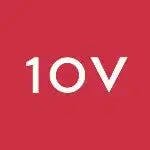How to use an OKR template for greater success with OKRs
An OKR template is an incredibly useful tool for tracking OKRs and enhancing transparency, accountability and alignment throughout the organisation.
6 November 2022

Objectives and Key Results (OKRs) have become an increasingly popular framework for goal-setting and defining measurable outcomes in businesses from start-ups to large organisations.
The process of strategic planning, setting company goals and establishing measurable results to track progress alongside them however is no easy task.
Often the procedure for creating, communicating, constantly validating and adapting corporate strategy through OKRs is neglected and the focus becomes about output delivery and task completion.
Using an OKR template can facilitate the creation of Company-wide, Executive and Team OKRs as well as helping track progress and keep you and your team aligned to the organisational goals.
What is an OKR Template?
OKR templates are best described as a performance management system, used to effectively ensure increased visibility of Objectives and tracking of the measurable Key Results.
In Layman’s Terms, an OKR template is a spreadsheet or document – typically stored in some variety of OKR software – which is used to map out and keep track of a team or company’s Objectives and Key Results.
However, at 1ovmany, we’re keen to emphasise that an OKR template should help realise all aspects of the OKR Framework, which include:
Facilitate the creation of a good corporate strategy;
Clearly communicated using a common structure & language;
Constantly validated with fast feedback loops;
Clear process through which we adapt constantly to the feedback.
An OKR template should clearly define what you as a team or organisation are trying to achieve.
It should also be communicated across the organisation, so it is clear what every other team is trying to achieve, helping to ensure cross-team collaboration.
The use of an OKR template will also help to establish fast-feedback loops through constant validation of the Key Results and make this visible to everyone across the organisation.
This will allow the team or organisation to adapt to the feedback we get from the measurable results and modify our strategy accordingly.
Benefits of an OKR Template
Tracking OKRs
I’ve seen a fair few articles discussing the benefits of tracking OKRs and why you should be tracking them.
But let’s get one thing straight, tracking OKRs is not something you should be doing, it’s something you have to be doing!
Faster decision-making is an aspect of using OKRs that organisations and teams thrive upon, but can only get the benefits of this through tracking OKRs.
This is where following the aforementioned OKR Framework helps separate the wheat from the chaff, in that it prompts you to be constantly validating and adapting – learning from the activity and pivoting accordingly.
Using an OKR template assists the tracking process and improves visibility of progression towards the desired outcomes, making it easier to identify pain-points and areas of weakness that need to be addressed.
Enhanced transparency and accountability
A key aspect of working with OKRs is ensuring that everyone involved in the process understands the purpose and value of the outcome on an organisation scale.
Just like doing a jigsaw puzzle, it’s important that everyone can see where and how the pieces fit together to reach the end-product.
An OKR template enhances transparency of how the work being done by teams and/or individuals is contributing to achieving the desired outcome.
Likewise, it signifies who in the team is accountable for ensuring that Key Results are met and maintaining the progression of work towards achieving the Key Results.
Use the 1ovmany OKR Canvas to populate your template
As previously iterated, OKR templates are an incredibly useful tool for tracking OKRs and enhancing transparency, accountability and alignment throughout the organisation.
However, I would be willing to wager that the issue that 95% of new users have with OKRs, is not with the template, but rather with the creation of OKRs themselves.
There are plenty of OKR templates around, but very few – if any – act as facilitation tools for the conversations that should be happening in order to conceptualise the Objectives and the accompanying Key Results.
The 1ovmany OKR Canvas guides you through the stages that during our work with clients we’ve identified as the route to success with creating great OKRs.
Initially helping to derive the value proposition, then identifying any challenges or blockers to the aspirations you wish to achieve, assisting with prioritisation of activities and finally creating your OKRs.
Of course there are examples of OKR templates such as the Google Sheets OKR Tracking Template, Excel’s OKR Tracking Template and if you want a more comprehensive system – recommended for larger organisations – we partner with Gtmhub and Tability, who both offer a specialist OKR platform that helps coordinate, communicate and align your OKRs.
But before thinking about an OKR template, we encourage you to direct your focus towards the creation of strong and effective OKRs, that will propel your strategy and help you reach your goals.
See a more detailed account of the 1ovmany OKR Canvas here, and watch our instructional video below to get an idea of how it all works!

About the author
1ovmany Communications Team
We help organisations reach their full potential through continuous and sustainable transformation in customer delivery and product excellence





















